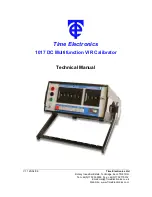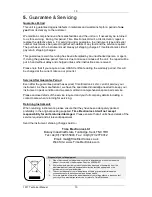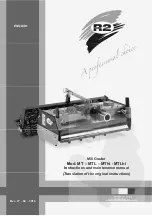
7
1017 Technical Manual
7
3.
Operation
3.1. Preparing for Use
Before using the 1017, you must first check to see if the battery level indicator shows that
the batteries are in a good state of charge. If the indicator shows that they are low then you
must recharge them by plugging the 1017 into the mains supply. It will take approximately
12 – 14 hours to fully recharge the battery pack. You may of course use the 1017 when it is
plugged into the mains supply irrespective of the battery state. The batteries should also be
checked during operation.
3.2. Using the 1017
Firstly, select the correct range on the range select switch ensuring that the output polarity
switch is ’OFF’ and that nothing is dialled up on the digit switch. Then dial up the required
value on the digit switch. The output may then be supplied to the unit under test by selecting
the output polarity switch.
Note:
When the output switch is set to the ’OFF’ position, there is a short circuit on the
output terminals.
Caution must be exercised when using the 100V range against possible electrical shock.
3.3. Thermal EMF's
When using the 1017 to provide a precision voltage of less than 1mV, care must be taken to
avoid Thermal EMF’s. These occur where temperature differences are present at the
junctions of dissimilar metals, e.g. – A normal solder to copper junction has a thermal EMF
of approximately 3uV/°C. Errors in the 1017 under stable temperature conditions are
typically less than +/- 0.2uV/°C.
3.4. Using the Deviation Control
Note:
The digital deviation control has no effect if used on the resistance range.
To apply a percentage deviation to the output, select either positive or negative deviation
with the control switch and dial up the percentage deviation required on the digit switch.
Alternatively, if the output is set to the correct value and the reading on the U.U.T. reading
differs from this, adjust the deviation control to give the required value. The error can then
be read directly, as a percentage, from the deviation control.




























